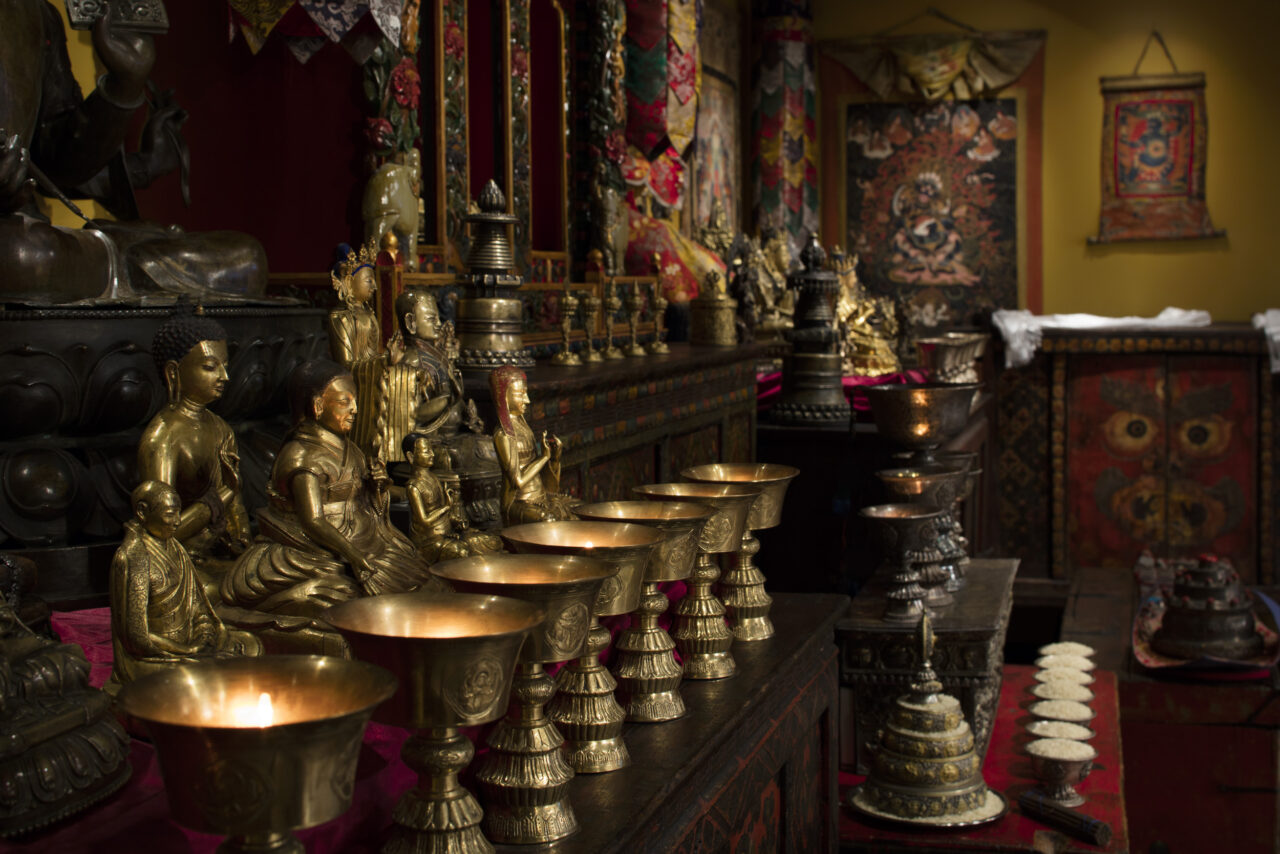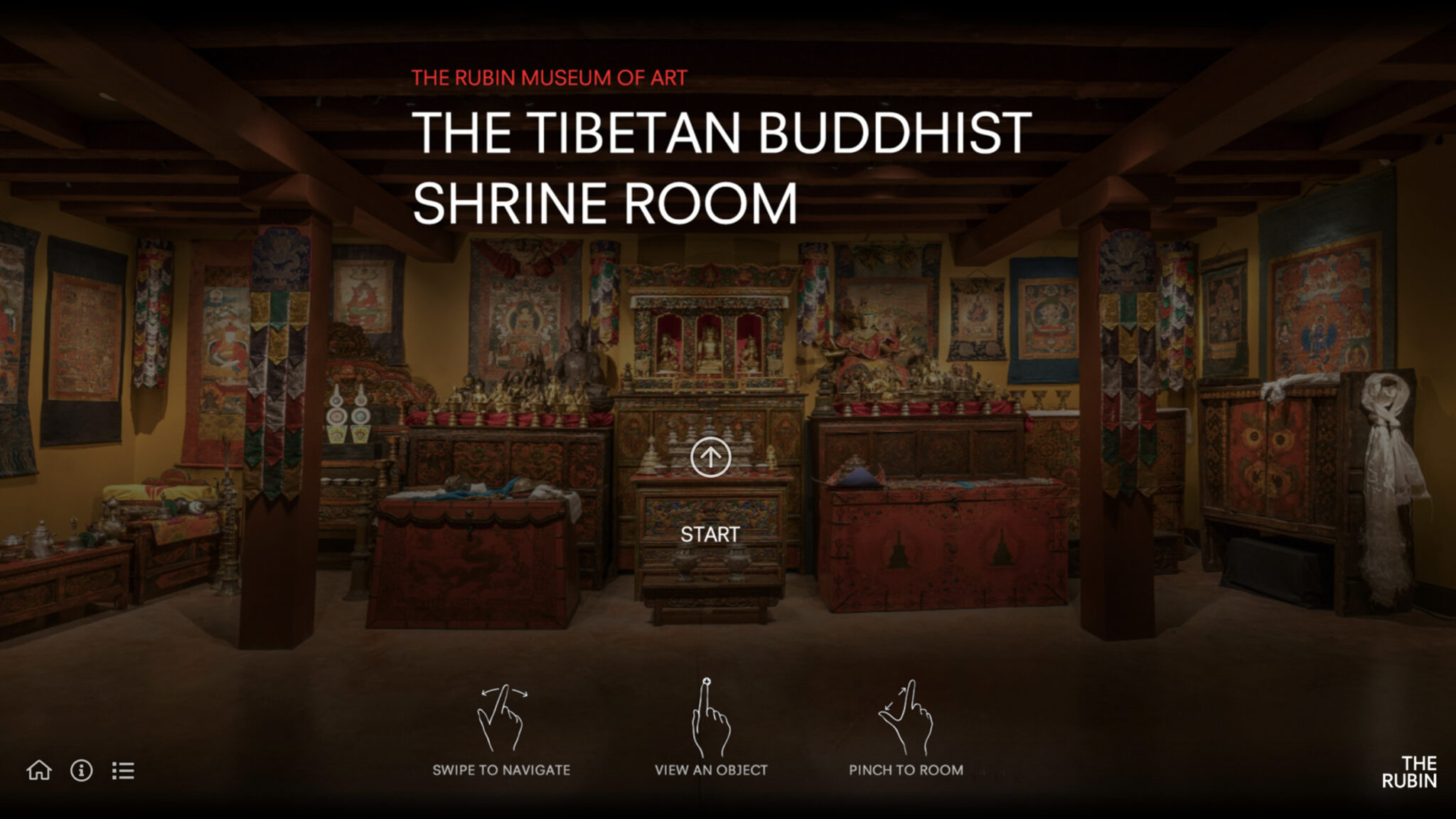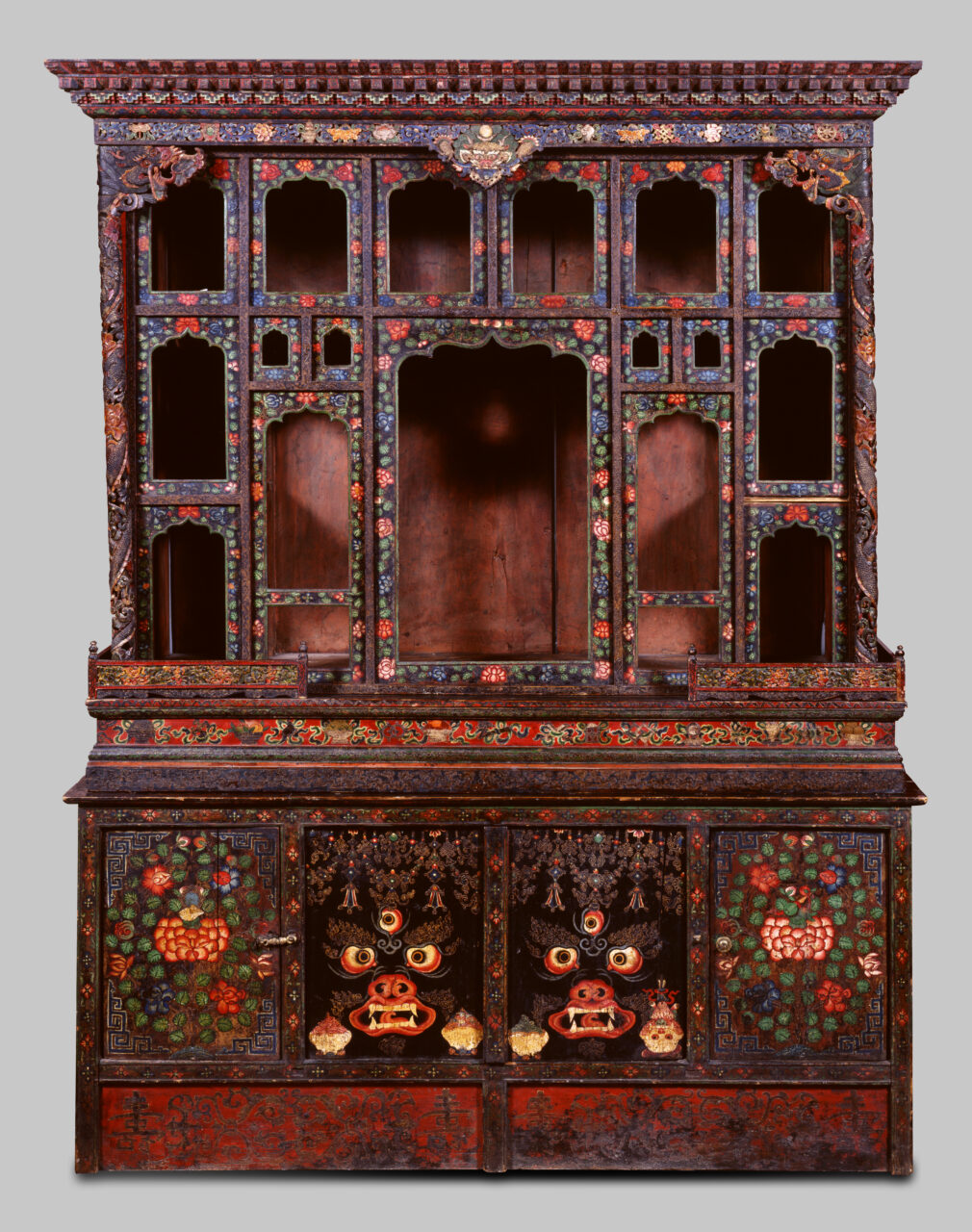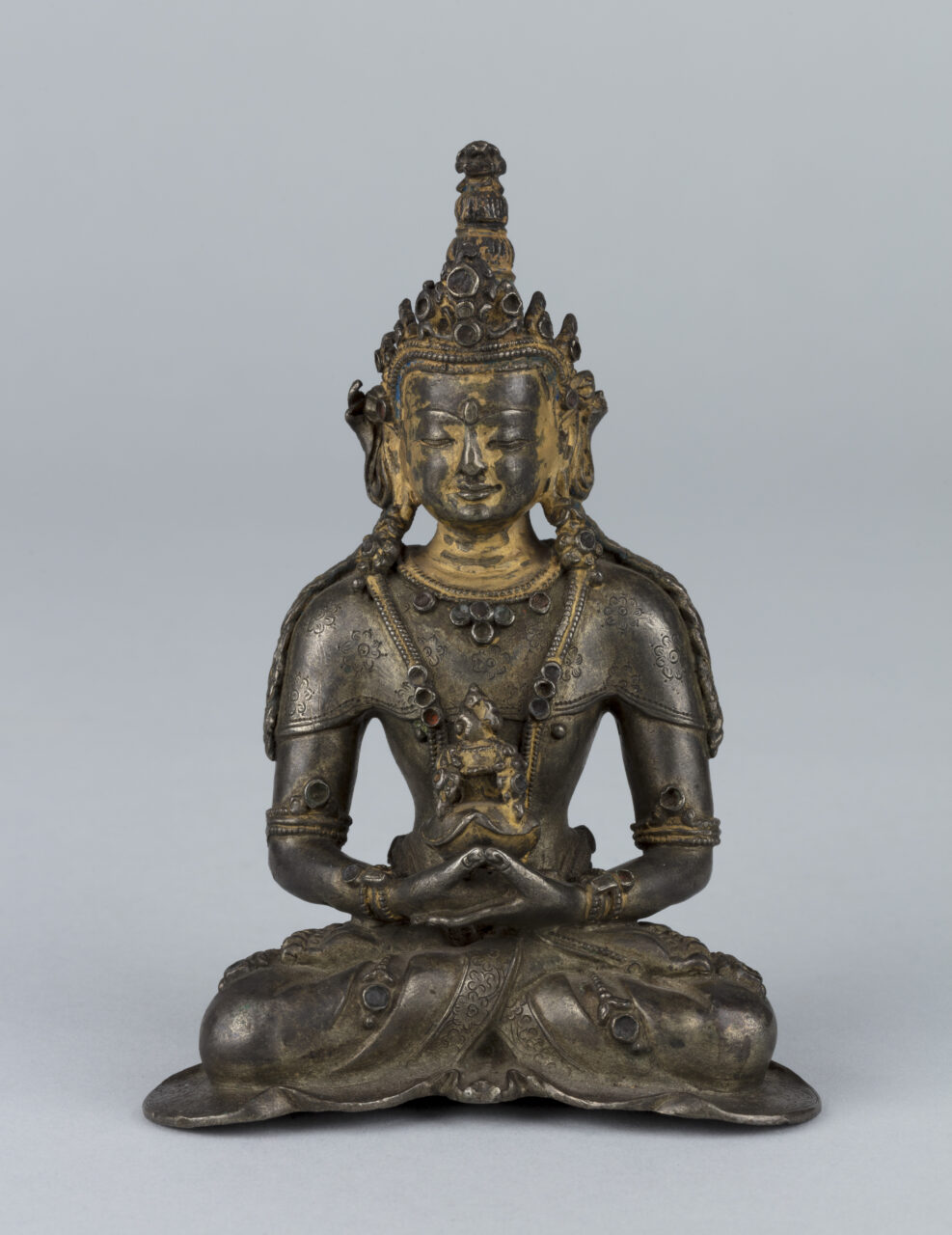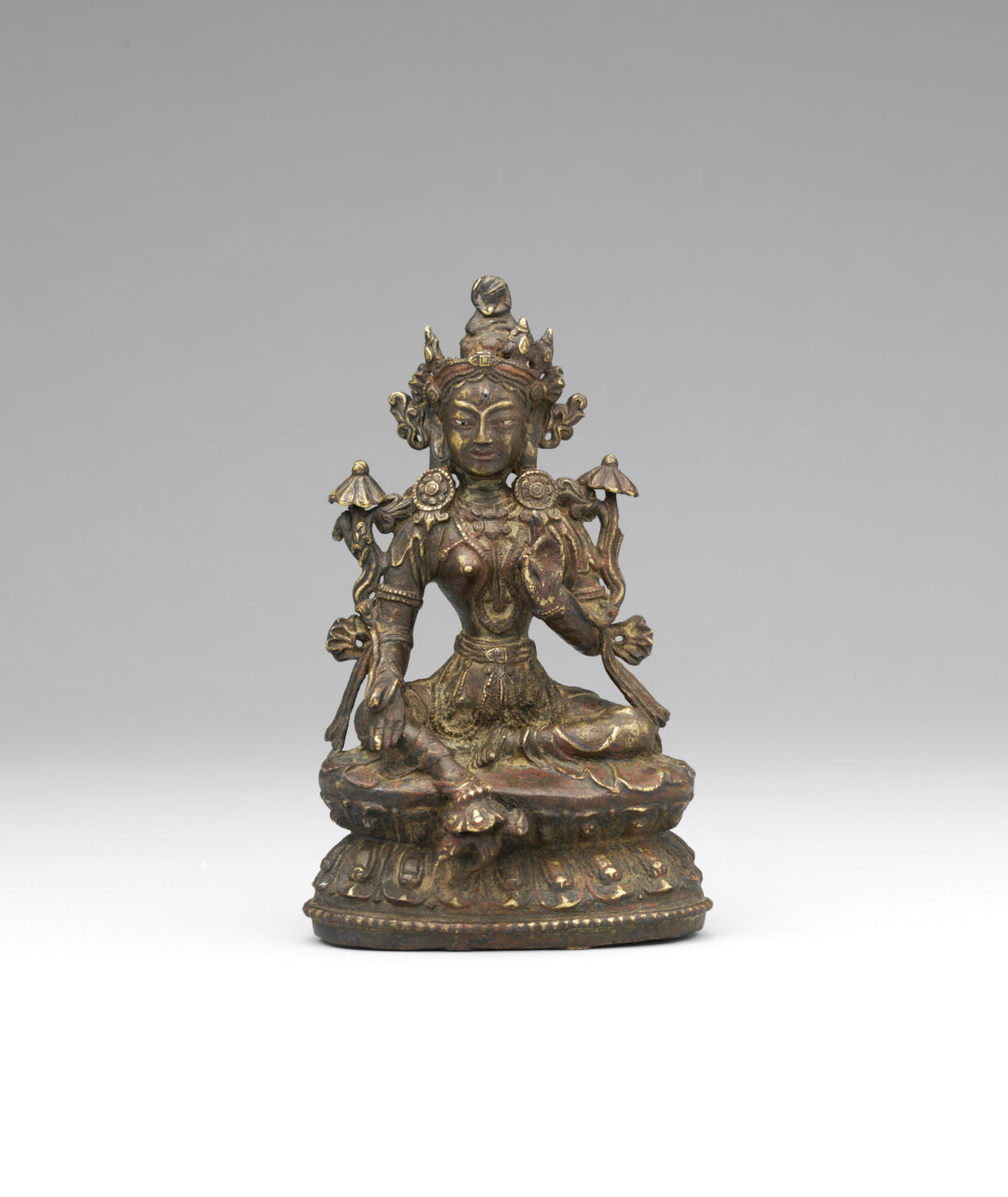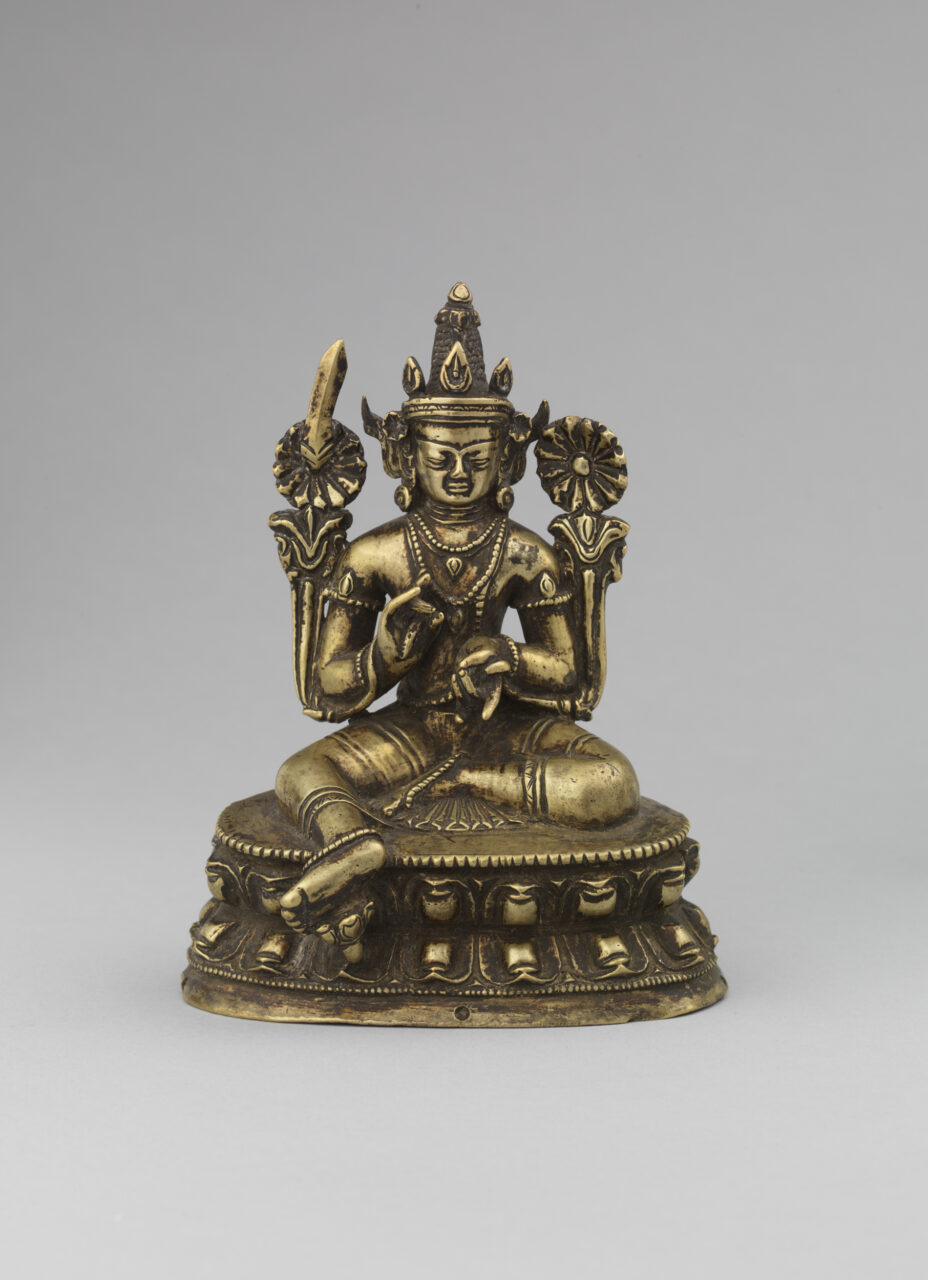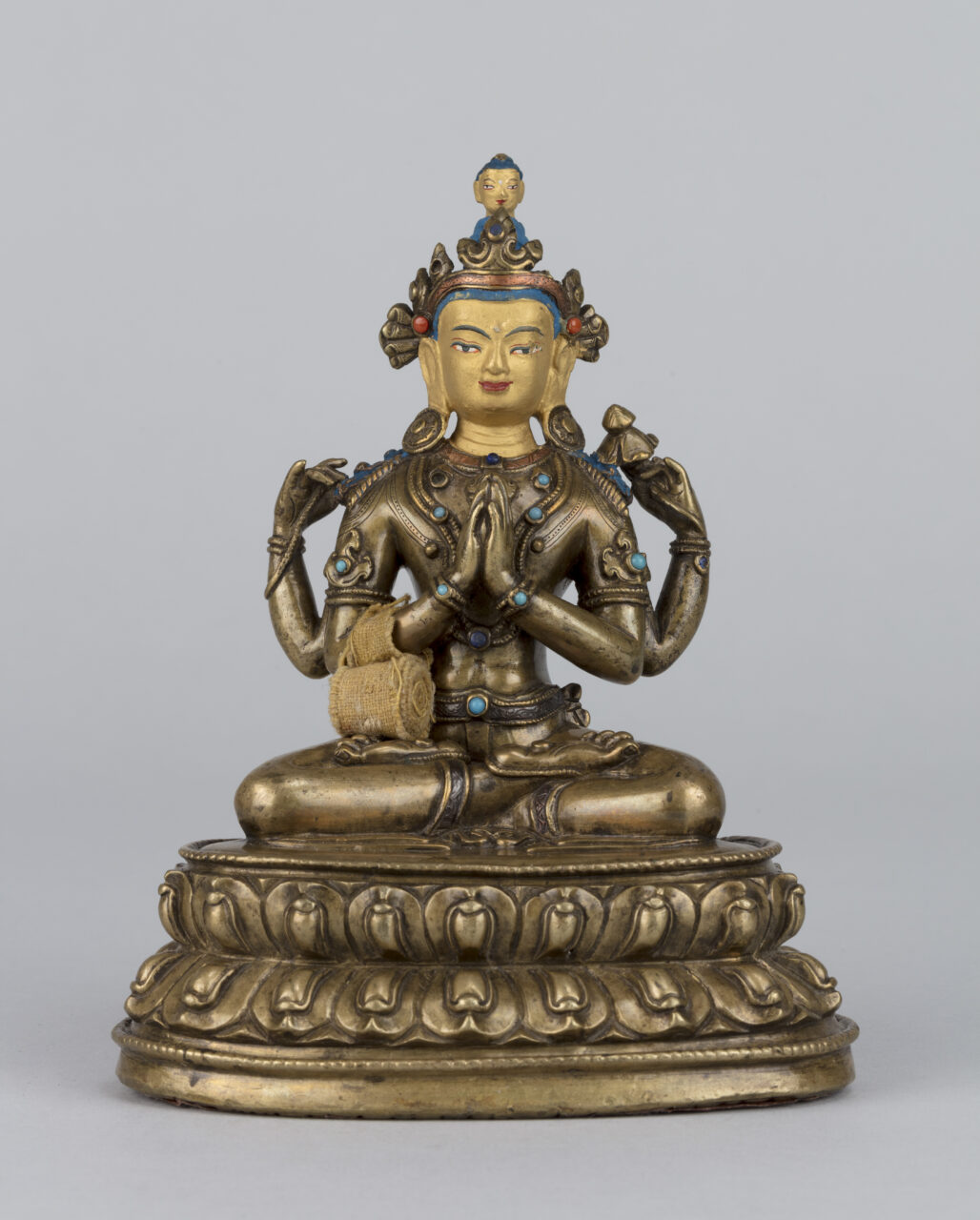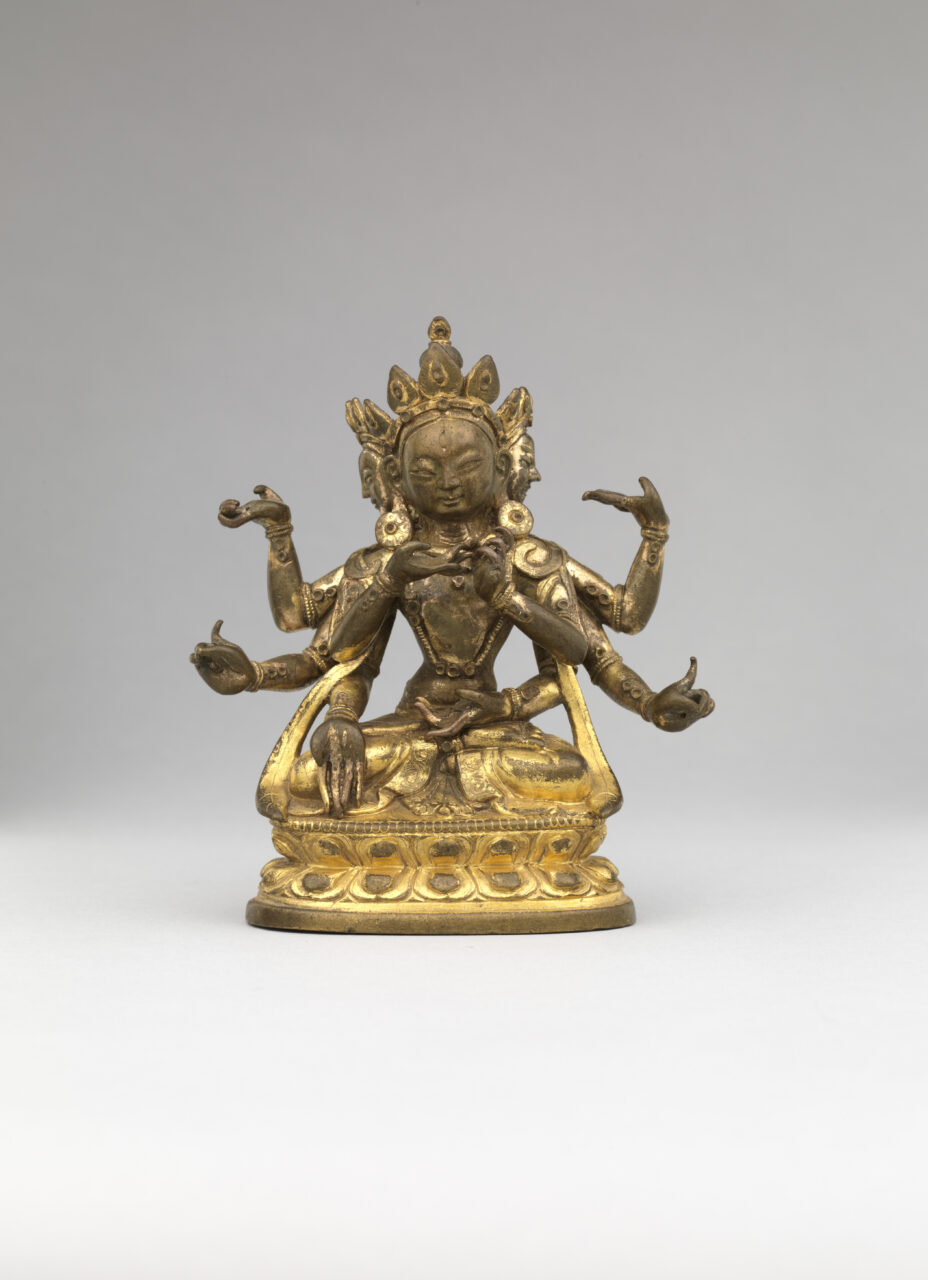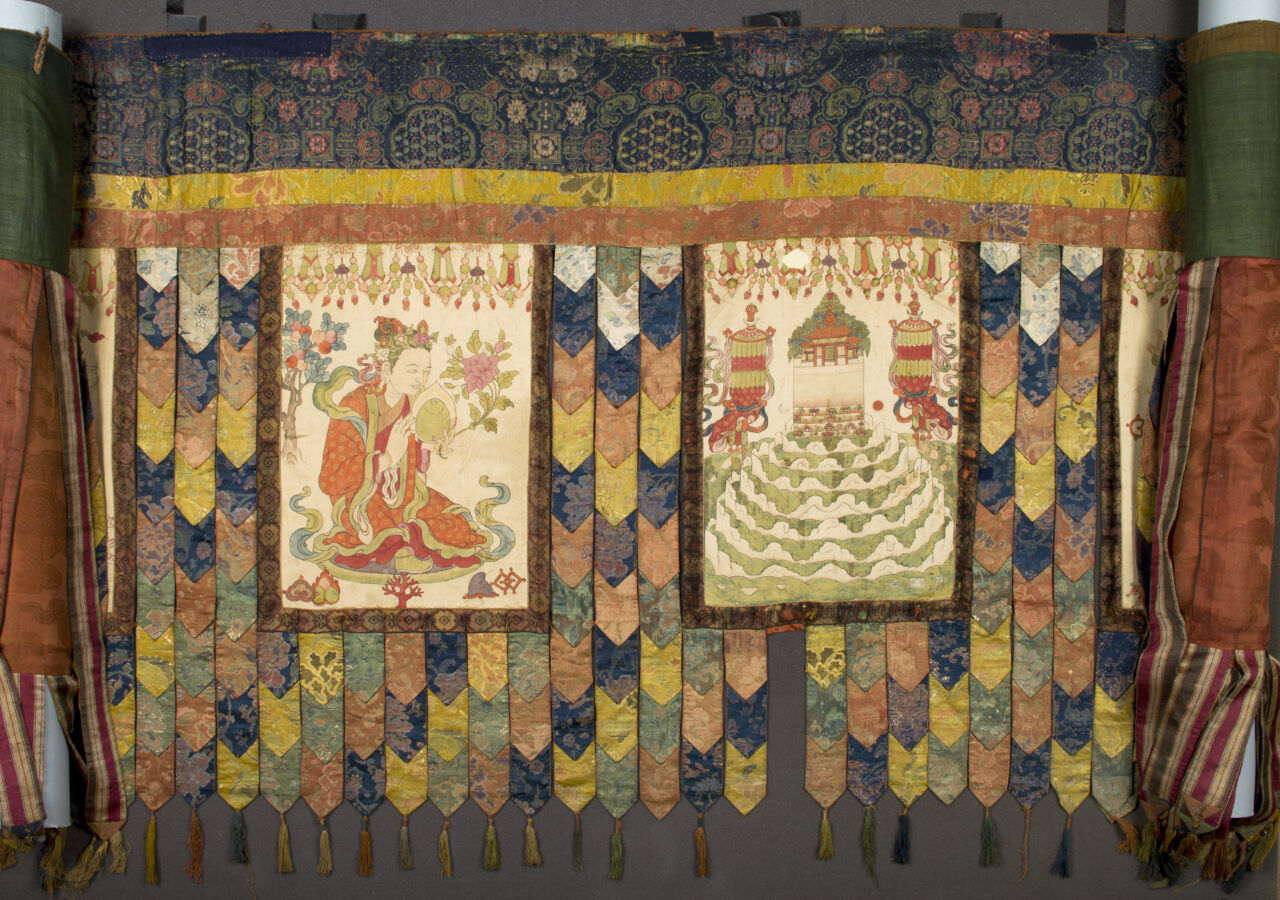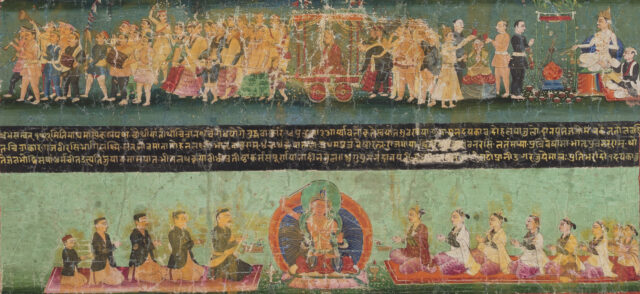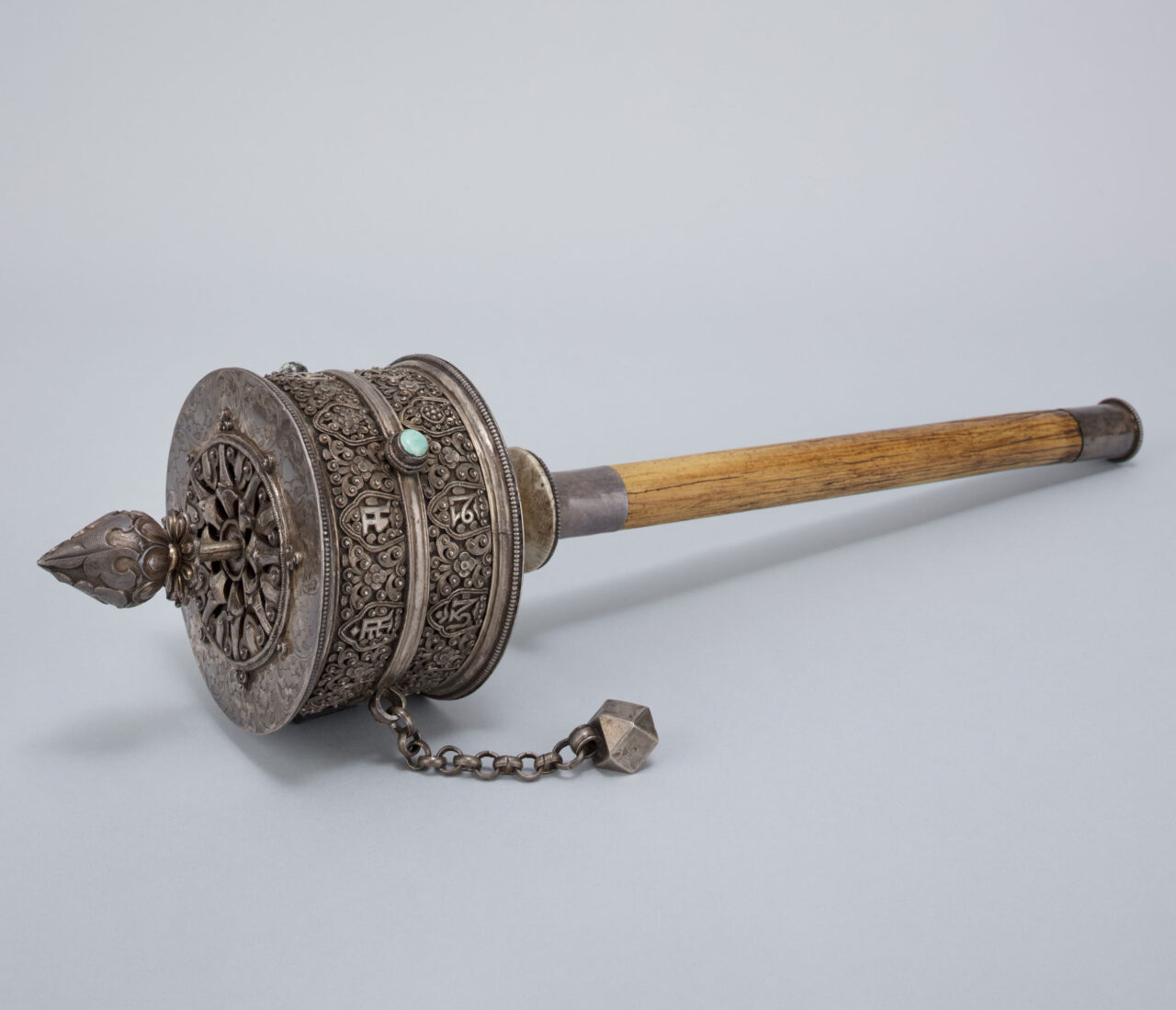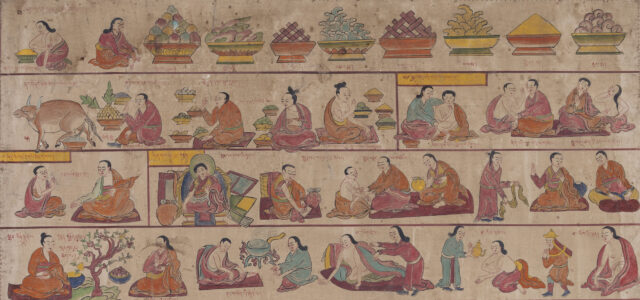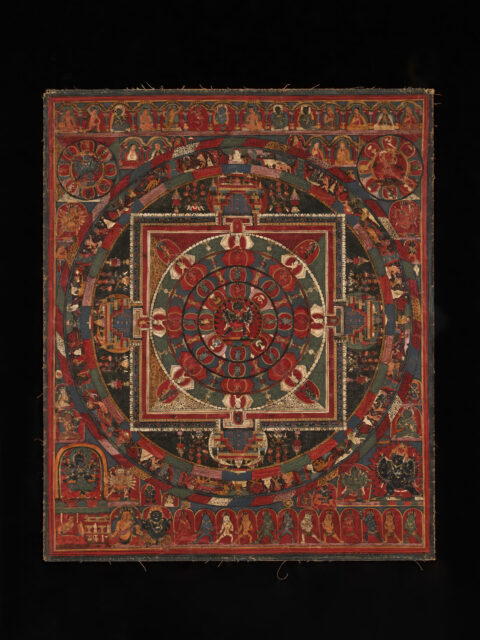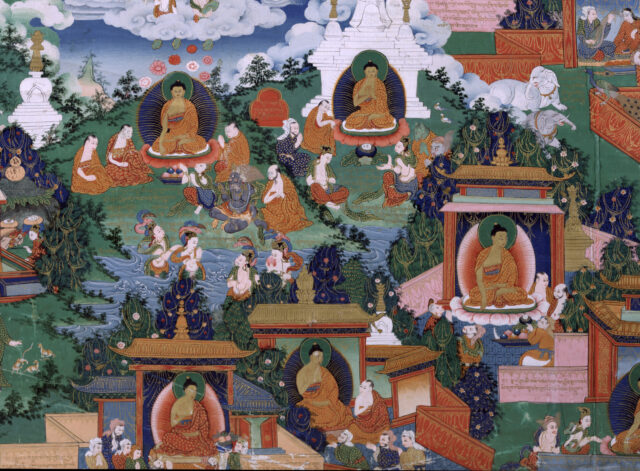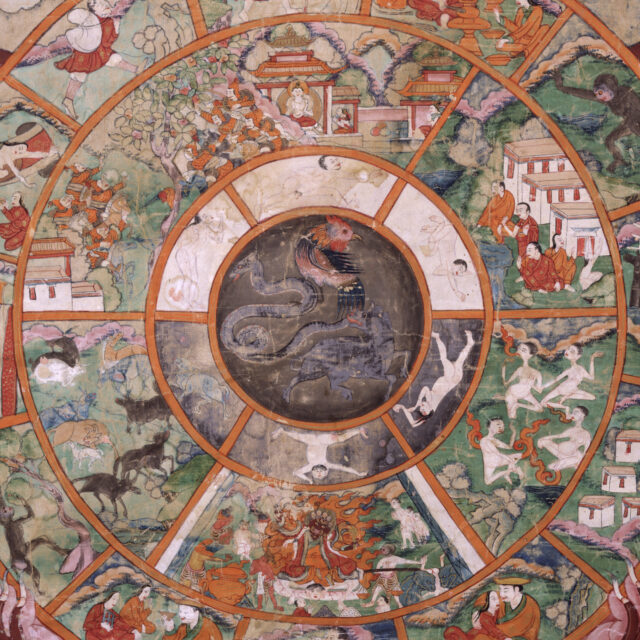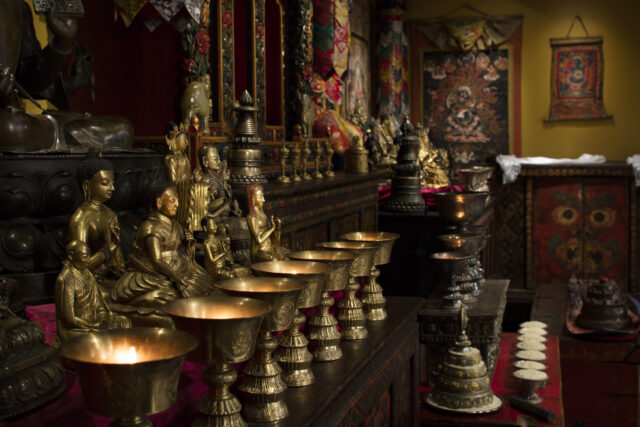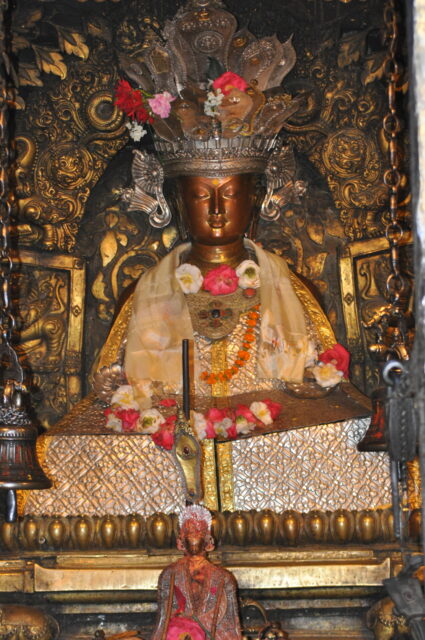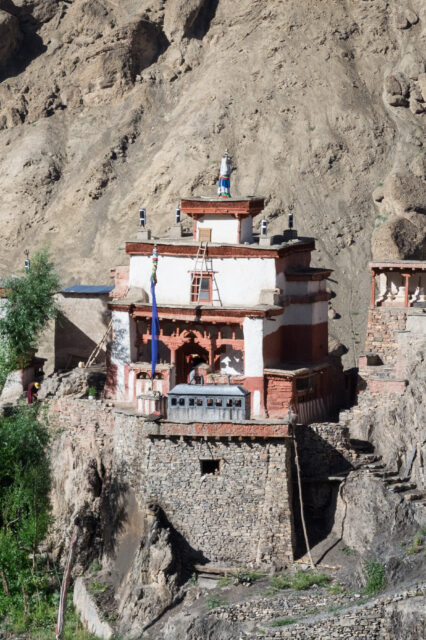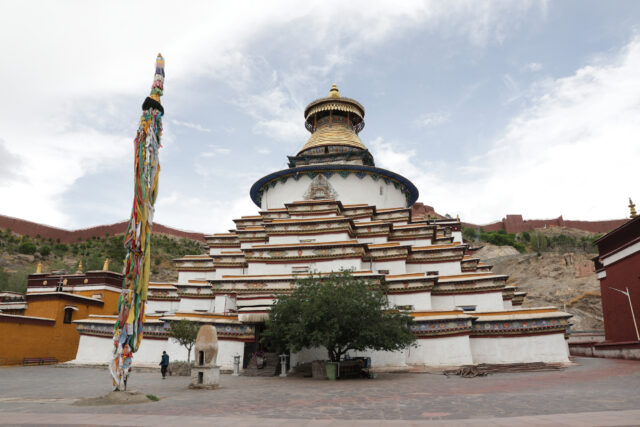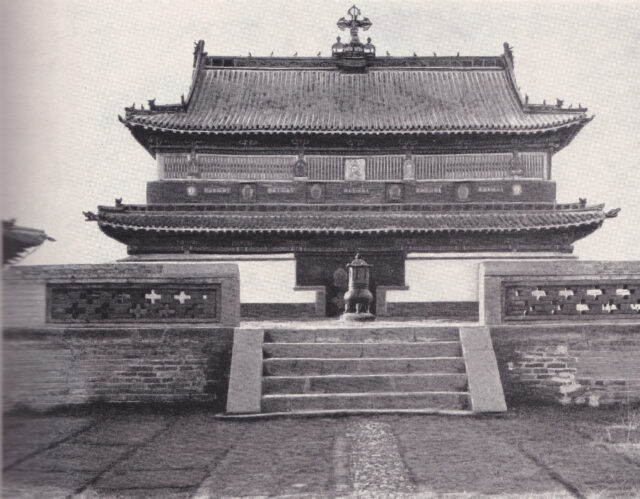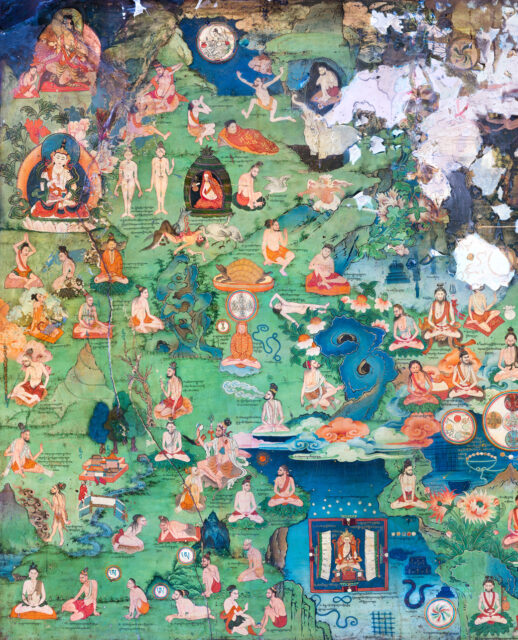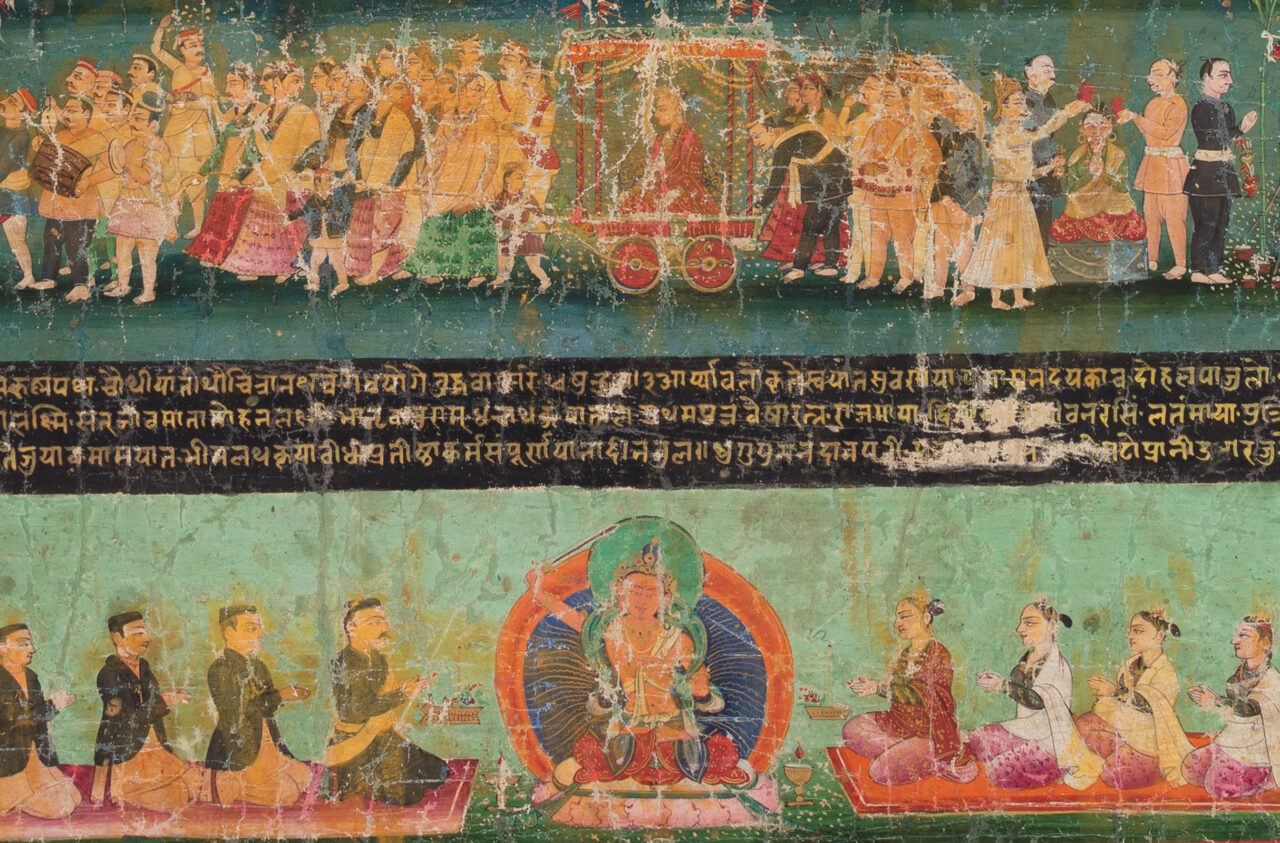The shrine cabinet in the exhibition allows visitors to experience a sacred space similar to what could be found in a Tibetan household where religious objects are displayed and used in ritual and devotional practices.
The main elements of any Tibetan Buddhist shrine are those objects that represent the Buddha’s body, speech, and mind. Images of buddhas, bodhisattvas, deities, and teachers are representations of the Buddha’s body. Books of Buddhist scripture are the physical manifestations of his speech, and stupas symbolize the Buddha’s mind as well as his formless body.
Home shrines create a space where families can display their religious images, worship, make offerings, and perform other rituals. The specific contents of such shrines depend on the Buddhist tradition practiced by the family and reflect particular teachings, lineage transmissions, and practices, which in turn determine individual images that are enshrined and used in daily worship and ritual ceremonies.
The interactive and video below provide virtual visits to the Rubin Museum of Art’s Tibetan Buddhist Shrine Room.
